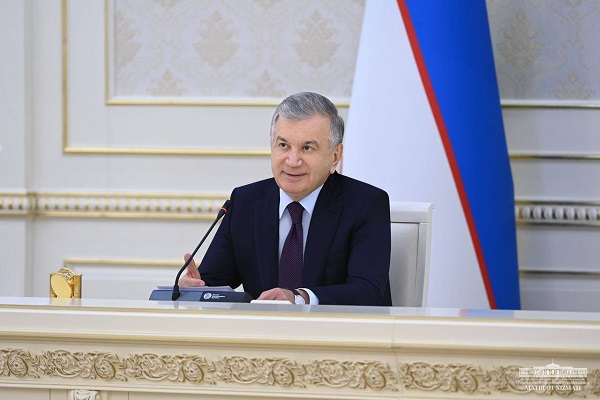
Shifting to an emergency water saving system
On November 29,2023 the President of Uzbekistan Shavkat Mirziyoyev held a video selection meeting on the rational use of water resources in agriculture and measures to reduce losses. 20 percent of our country's water resources are formed in our country, most of it in neighboring countries. Due to climate change, water sources are decreasing every year. The situation with transboundary river management is also serious. As a result, it is predicted that by 2030 the water deficit in our country will reach 15 billion cubic meters.
But even in this case, water is used inefficiently. 90% of the total water resources in our country are spent in agriculture. For example, in our country, 10,000-11,000 cubic meters of water are spent to irrigate one hectare of cotton field, and in countries with a similar climate and topography, 2-3 times less water is used. Even if this comes at the cost of proper water management rather than wasting it.
An average of $1 billion is allocated to water management annually. This industry ranks 4th after education, healthcare and agriculture in terms of budget receipts. However, the system is ineffective due to miscalculations and outdated approaches to water management. Problems, new initiatives and challenges in this area were discussed at the meeting. The head of our state focused on the transition to an emergency water saving system for a period of one year. The first important task is concreting the canals and ditches. It is estimated that an average of 14 billion cubic meters or 36 percent of water per year is lost in non-concrete irrigation networks without any economic benefit. The greatest water losses occur in the Republic of Karakalpakstan, Namangan, Navoi, Khorezm and Bukhara regions. The 175,000 hectares of cultivated land at the end of the canals have very difficult water supplies. Overall, our economy loses $5 billion in revenue per year as a result of water loss. Therefore, the water sector declared “the year of concrete channel breakthrough.” Next year, the target is to concrete 1,500 kilometers, that is, 4 times more large canals than this year. Starting from 2025, at least 2,000 kilometers of canals will be concreted.
It was noted that November-March is the most convenient time for this, and construction on canals, the design of which is already ready, should begin now. Akims of regions and districts have been instructed to convert 3.5 thousand kilometers of internal networks to concrete covering within a year. It was said that interested clusters and farmers can be helped with special equipment and construction materials, and costs can be reduced by 2 times. The second important task is the introduction of water-saving technologies. Our country has 4.3 million hectares of irrigated land, 30 percent of which have been introduced using water-saving technologies. In such clusters and farms, productivity has increased while saving water by 30-40%, fertilizers and fuel by 25-30%.
However, in Kashkadarya, where the cost of water supply is very expensive, only 16 percent of the land is irrigated in this way. Laser leveling, which is the simplest agrotechnical measure for water conservation, is not enough. In Kashkadarya, Samarkand and Tashkent regions there are less than 10 percent of such areas. One of the reasons for this is that the procedure for reimbursing part of the interest on loans to farmers who have introduced water-saving technologies does not work. Therefore, a new financing system was determined at the meeting. According to it, clusters and farmers will be allocated a 14 percent loan for a period of five years with a two-year incentive for the introduction of water-saving technologies. An open platform will be launched for this purpose. The agreement with both the bank and suppliers is concluded online, through an electronic platform.
Officials have been given instructions on the financial and organizational aspects of this matter. The importance of annually expanding the scope of water saving implementation and studying the experience of Turkey, Spain and China in this regard was emphasized. In the next three years, the practice of subsidizing 15% of agricultural machinery and 30% of laser planners will continue. By 2026, all arable land will be laser leveled. After 2026, taxes on land and water on lands not leveled by laser will increase sharply. The third important task is to reduce the cost of water delivery. Today, an average of 212 soums are spent for every cubic meter of water supplied to the cluster and farmers. But in Bukhara, Kashkadarya and Namangan it is 2-3 times more expensive. At the same time, 63 percent of water costs come from pumping stations. In particular, 7 billion kilowatt-hours of electricity are used annually for irrigation. Since 80 percent of water pumps are outdated, energy consumption is high.
The head of our state emphasized that the most correct way to reduce costs and increase efficiency is to modernize pumps and transfer their management to a private partnership.
Source: https://president.uz/oz
